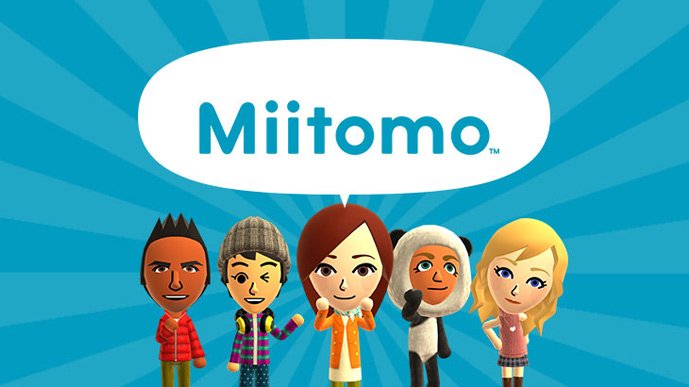When Miitomo released earlier in March this year, a colleague put it to me that the only reason I like Miitomo was because it was made by Nintendo, and that if Activision were the makers of it, I wouldn’t even touch it.
After laughing heartily at the thought of an Activision made Miitomo, I stopped and realised that this was pretty much true. I love Miitomo because Nintendo made it, but the thing is, only Nintendo could have made Miitomo. I don’t feel that an Activision version would have the charm, the wackiness, or the thoughtfulness that Miitomo exhibits. To whittle it down even further, only Yoshio Sakamoto and his offbeat imagination has the power to birth something quite like Miitomo.
Sakamoto is an interesting figure in the gaming world, even in the insular Nintendo one; we’re talking about the man who directed one of the most atmospheric 2D action/adventure games of all time – Super Metroid – being the same person responsible for absurdly amusing titles such as Wario Ware and Tomodatchi Life. Sakamoto is almost the ‘anti-Miyamoto’ in that he focuses on areas that Miyamoto doesn’t, like his last directing effort Metroid: Other M. Regardless what you think about the game, it was a direction no one else at Nintendo would even dare to go in.
Miitomo can be a fascinating experience when you stop and think about it. Who would’ve thought that Nintendo’s first mobile application would be a quasi-social networking app? Personally, I was hoping for some kind of mobile Mario speedrunner to complete my life (Coincidentally, today is that day) but looking back at how much time I’ve crammed into Miitomo – as of writing this, over 750 questions have been answered – I’m happy with how things turned out.

Miitomo’s been out for about 8 months now, but the question of “What exactly is Miitomo?” needs to be addressed. So er… what is Miitomo?
Well, one could say it’s simply ‘Tomodatchi Life Mobile Edition’ or a Trojan horse to get My Nintendo into the wild. You could even call it a failure, as it hasn’t managed to drum up much in the way of revenue. Essentially, you create a virtual avatar, answer the avatar’s questions, and then let it run off and converse with your friends’ avatars before it returns with their answers.
The opportunity to answer a myriad of questions ranging from silly to head-scratching may seem like a boring activity to most, yet I see Miitomo as a great opportunity to be inspired. It allows you to keep your mind flowing, to use the questions as prompts to simply write, and so it’s a great tool to foster creativity. If you answer the questions with mundane one word answers, then you’ll only get as much as you put in. A guilty pleasure of mine involves looking through some of the answers I’ve written in the past and having a hearty chuckle at how insanely stupid they are.
Although these questions are the meat of the app, the crowning creative jewel has to be Miifoto. Miifoto is a perfect example of where Nintendo’s exemplary design, polish and usability meets with their insane peculiarity. Miifoto allows you to create an image from positioning your Mii, choosing a background image and adding in stamps for effects. It is so easy to modify the position of your Mii in three dimensional space that, coupled with the versatility of the tools – ridding one’s Mii of its body and placing the head onto someone else’s as an example – you can pretty much craft any image you see fit.
I’ve used Miifotos in an untold number of ways (mostly to make my own memes in all honesty) and it’s the main reason why Miitomo will never leave my phone. I’ve even used it to mock up a quick composition for a piece of artwork, for which it was a superb tool in allowing me to express and edit an idea extremely quickly.
By far my favourite usage of Miifoto has to be my impromptu holiday snapshots earlier this year. Instead of staging immaculate photos of my friends and I in eccentric situations to deluge upon social media, it was far easier to craft Miifotos of our sometimes mundane, sometimes crazy adventures. By using Miifotos, I could recreate iconic imagery from the earlier in the day, exaggerate the humour of certain situations, and generally express my creativity in a way that brought entertainment to both those in the photos, and (hopefully) to those at home browsing our social media to find out how we were doing. You could say that this is also possible with drawing, which I agree, but it was the effortlessness of Miitomo’s UI that allowed me to work almost instantly.
You see, I love Mitomo. It’s become invaluable to me, with its ability to inspire and to create, and although it was updated recently – the sidekick feature and the posters are generally great additions – I think sadly it’s too late. It definitely brought some interest back into the app, but hardly anyone in my friend circle uses it anymore.
Ultimately, though, it really doesn’t matter to me. I will continue to use Miitomo as I have been for the foreseeable future; well, until a certain plumber forces his way onto my phone and endeavours to takes over my life.














